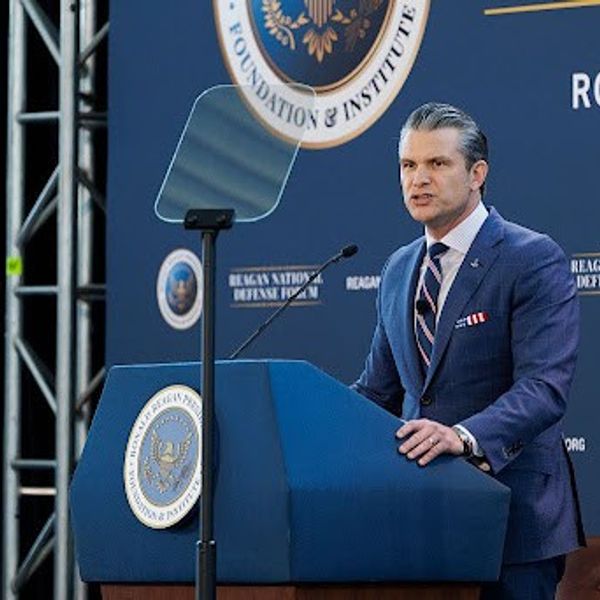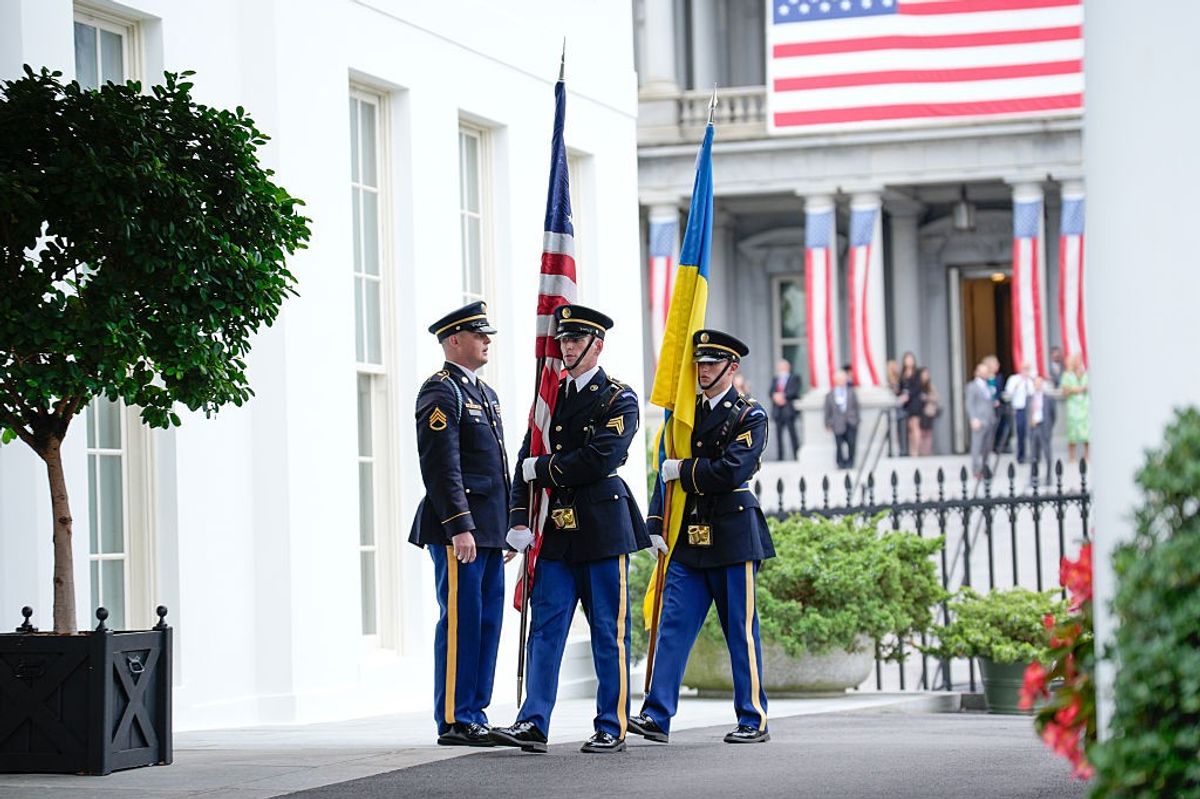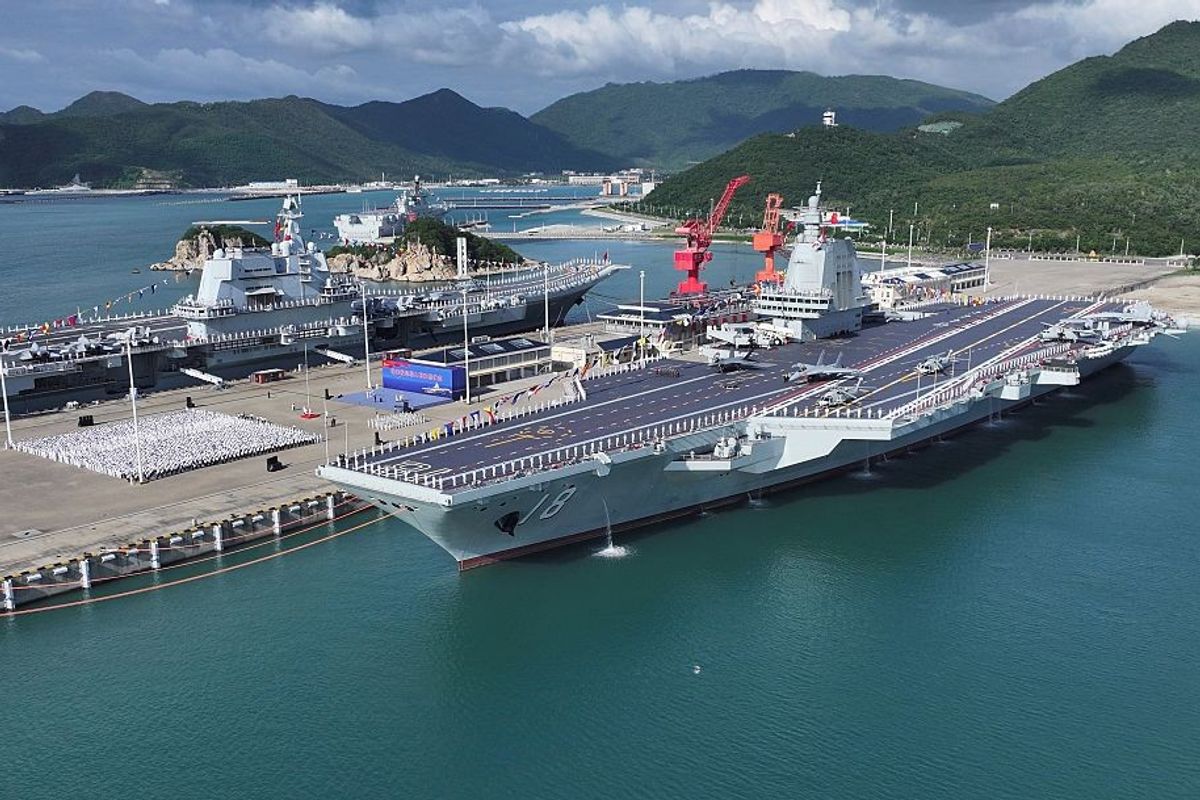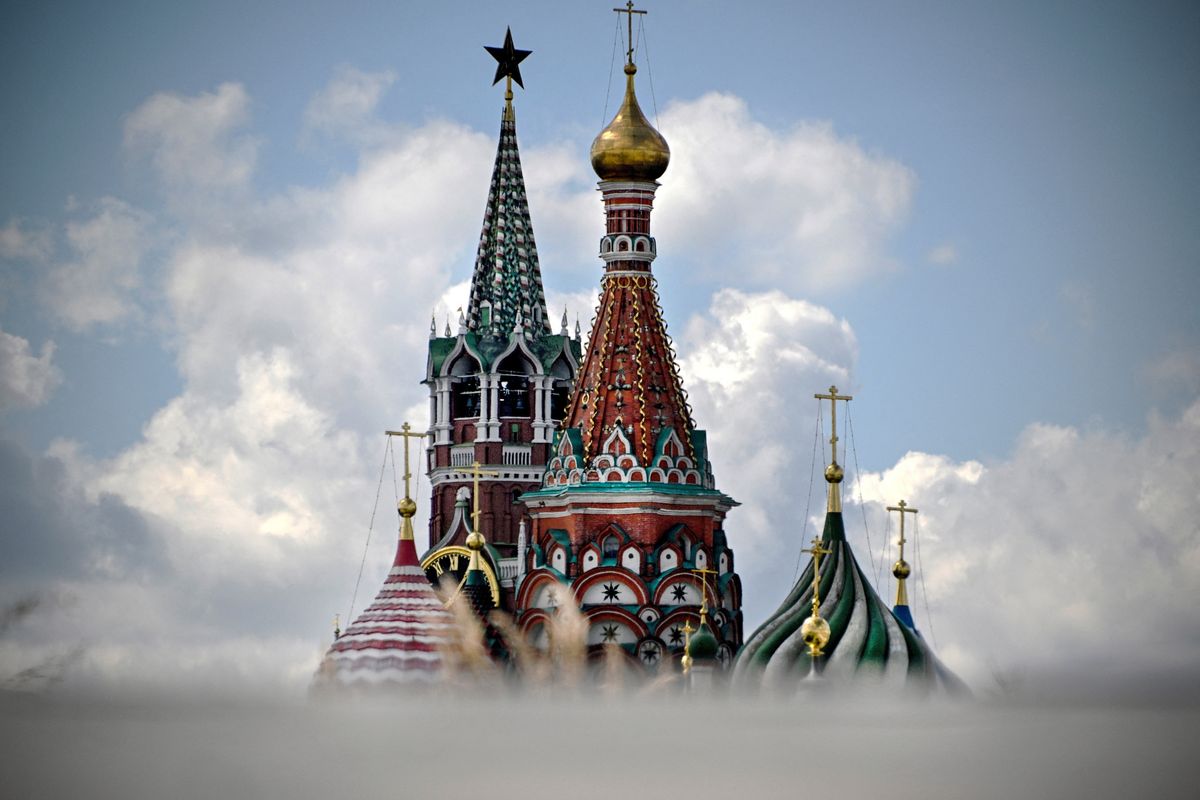Yet the Russian army continues to engage in desperate efforts to regain limited territory to the west. British intelligence estimates that since the start of 2025 Russia has suffered 332,000 casualties, the highest loss rate since the invasion. Russia has made only marginal gains, which Putin trumpets as victories as he throws more men and equipment into the Ukraine meatgrinder.
Of course, Putin cannot afford to admit failure, but it nonetheless seems as if he actually believes his strategy is succeeding. Why?
The answer lies in the perverse incentives of Russian command and control (C2), which conceal the weaknesses of Russian FS. Russian C2 is concentrated in one civilian with no military training (Putin), and his small circle of advisers.
Putin’s leadership discourages innovation by field officers and welcomes blind obedience. Bad news from field officers of all ranks is punished with demotion or arrest. Good news is rewarded with promotion. As a result, field officers routinely lie about their failures in hopes of promotion and reassignment. There is almost no active search for information by headquarters to correct misinformation sent by field officers.
Russian force structures are notoriously corrupt—a corruption that is expected and tolerated, but also can be an excuse for punishment. Officers steal from their units by exaggerating the size of the unit and pocketing the unused pay. Hence, many Russian units are severely understaffed. Soldiers steal from their units by selling weapons, ammunition, and fuel, leaving their units under-equipped. The vast majority of battle-hardened soldiers are long gone, as are military trainers, who were all sent to the front lines. New Russian recruits are untrained and unaware of the risks they face.
Russia's C2 and FS Problems from the Start of the Invasion
A brief review makes it clear that C2 and FS problems have bedeviled the Russian invasion from the start of the 2022 invasion. Planning for the invasion ignored standard military doctrine, which emphasizes that successful invasions require sufficient scale, speed, and force. The considerable literature on the force differentials needed for an invasion, including Soviet doctrine, agrees on the classic rule that a frontal assault requires a 3:1 force ratio to compensate for the higher casualties suffered by the invaders.
Effective command and control are also essential for the success of an invasion. This includes accurate intelligence about enemy forces, freedom for field officers to improvise as needed, rapid field intelligence upward to inform tactics and strategy as the invasion proceeds, and quick top-down decisions in response to field intelligence.
The 2022 invasion violated all these requirements. In order to conceal its intentions and achieve an operational surprise, the planning of the invasion was limited to a very small group led by Putin. Not even Russia’s Foreign Minister, Sergey Lavrov, was included in this group. The Russian field commanders on the ground in Belarus for military exercises had no idea that they would be leading an invasion. The success of this secrecy came at a high cost: there was no opportunity for critiquing the invasion plan and no consideration of fall-back strategies.
Russian intelligence about the Ukraine’s response was based entirely on faulty assumptions that a high-speed invasion would demoralize the Ukrainian military, the Russian military would easily defeat the Ukrainian military on the battlefield, the top Ukrainian leaders would be quickly captured and executed, and that the vast majority of Ukrainians would either welcome the Russian invaders or remain passive.
The 3:1 force differential rule should have required an invasion of 590,000 Russian, given that the Russians knew the Ukrainian military had 196,600 active-duty personnel. Instead, the Russians planned an invasion of 190,000 personnel, actually smaller than the combined Ukrainian armed forces. Even worse, instead of massing its invasion force at one point to achieve a breakthrough, the Russians decided to attack on six different axes: from the Black Sea in the southeast, from Crimea in the south, from Donbas in the east, from Belgorod in the northeast (towards Kharkiv), from Kursk in the northeast (towards Kyiv), and from Gomel, Belarus, in the north (towards Kyiv).
All the Russian invasion routes faced unexpected problems, but the flaws in Russian C2 and FS can be illustrated by the fate of Russia’s most promising attack, coming from Gomel, Belarus, and aimed at Kyiv. This included an airborne assault on Antonov airport, in the Kyiv suburb of Hostumel. The Ukrainians had not expected an attack from Belarus and were unprepared for both the land invasion and the airborne assault.
Why did these attacks fail? Russian secrecy about the invasion had left the Russian ground forces in Belarus completely unprepared. They were informed of their roles in the invasion only 24 hours before the invasion. As a result, they lacked ammunition, fuel, food, and communications. They did not anticipate heavy fighting. Mud forced their armor to use the few roads, causing traffic jams. They encountered entire towns that were not on their maps, requiring them to stop and ask civilians where they were. Residents reported the Russian positions to Ukrainian authorities.
The Ukrainians acted swiftly to confront the Russian assault from Gomel, which was approaching the outskirts of Kyiv. They committed most of their available special forces and special units of other security units, called up all their reserve units, and mobilized the cadets and staff of their military academies into new battalions, supported by two brigades of artillery and one mechanized brigade. Even so, the Russians had a 12:1 troop advantage on the Gomel axis. On 27 February, their advance units were able to capture the suburb of Bucha, just west of Kyiv.
However, the phone calls from residents from towns in the Russian path permitted Ukrainian artillery to target the Russian columns. The Ukrainian forces knew the territory well, giving them a huge tactical advantage, and they were able to assault the slow-moving Russian columns almost at will, causing panic, abandonment of equipment, and blockage of the roads. As the Russian columns stopped moving, their losses multiplied. The Russian advance units that had reached Bucha were short on fuel, ammunition, and manpower. They assumed defensive positions, waiting for reinforcements that never arrived.
In the battle for Antonov airport on the edge of Kyiv, the Russians used helicopters and elite airborne troops. These troops were to capture and execute the Ukrainian leadership. But the Ukrainians surrounded the airport with heavy armor, pounding the Russians. They were able to capture the airport, driving the Russians into the surrounding woods. While the Russians were able to recapture the airport after a couple of days, the Ukrainians had time to destroy the runways, making impossible the landing of reinforcements and preventing the Russians from capturing the Ukrainian leadership.
On March 16th the Ukrainian government announced a counteroffensive in the Kyiv region, and by the end of March, Russian ground forces were retreating north from the Bucha area. By April 2nd the entire Kyiv oblast was back in Ukrainian hands, including the area bordering Belarus.
What was the Russian response to this humiliating defeat? Those Russian generals who were not killed, were mostly cashiered or arrested, as were many of the colonels. The disaster resulted largely from Putin’s leadership, but the defeated units took the blame. This added to the incentive for officers to lie about failure and pretend achievement.
The Cipher Brief brings expert-level context to national and global security stories. It’s never been more important to understand what’s happening in the world. Upgrade your access to exclusive content by becoming a subscriber.
The First Stalemate
The war has continued through various phases. The second phase, from early April through the end of August, 2022, was marked by active fighting along front lines, with heavy Russian losses, but was a relative stalemate in terms of territorial gains by either side.
The Second Ukrainian Offensive
The third phase began on September 6, 2022, when Ukrainian troops attacked the Kharkiv front near the Russian border. On September 9, Ukrainian mechanized units broke through. Ukrainian forces raced north and east. The cities of Kupiansk and Izium fell to the Ukrainians on 10 September. By the next day the Russian forces north of Kharkiv had retreated over the border, leaving all of the Kharkiv Oblast under Ukrainian control. Pressing on to the east, Ukrainian forces on 12 September crossed the Siverskyi Donets, and on 1 October the Ukrainians recaptured Lyman, a major railway hub, and took as prisoners an estimated 5,000 Russian troops.
As Russian forces rushed to the northeast front, Ukraine launched its counteroffensive in the Kherson region on October 2. By 9 October Ukrainian forces had retaken 1,170 square kilometers of territory, pressing on toward the Dnieper River and the city of Kherson. On 11 November, Kherson was occupied by the Ukrainians.
The Second Stalemate
The second period of stalemate dates from 12 November 2022 until the present. During this three-year period, the war has seen the introduction of drone warfare on a massive scale, first by Ukraine and then by Russia. As a result of the drone warfare, the entire conflict has changed in character. Drones have made assaults by armored vehicles so costly that the war has reverted to trench warfare reminiscent of World War I. Drones now account for two-thirds or more of front-line casualties in the war.
Ukraine’s government discarded Soviet-era regulations to provide tax breaks and profit incentives to independent Ukrainian drone producers, authorizing the Ukrainian military to contract with them. These independent companies have made good use of Ukraine’s large cadre of skilled aeronautical engineers and information technology specialists. About 200 of these companies are officially recognized to receive military contracts, and as many as 300 other groups manufacture drones and donate them directly to military units. However, financial resources remain a limiting factor.
Need a daily dose of reality on national and global security issues? Subscriber to The Cipher Brief’s Nightcap newsletter, delivering expert insights on today’s events – right to your inbox. Sign up for free today.
Russia has rapidly developed its own drone capacity. Moreover, Russia has the resources to outproduce Ukraine, even if its drones are less sophisticated. Russian drone production is limited less by finances than by the search for microchips, smuggled from the west or bought from China. Russia also has ballistic and airborne missile systems that are hard for Ukraine to bring down. Russia has been using massive barrages of drones and missiles to demoralize Ukraine. But this effort is counterproductive. Bombings anger enemy populations and stiffen resistance, as shown in WWII by the Blitz of London and Allied carpet bombings of Germany. Russian barrages may have strained Ukraine’s economy, but they have not lessened resistance.
While the drone/missile war is well known, Ukraine’s other defense industry growth is less known. Ukraine now produces more artillery shells than all of NATO’s 32 members and Europe. Since 2022, domestic production of armored personnel carriers has increased by 400 percent, artillery by 200 percent, ammunition by 150 percent, and anti-tank weapons by 100 percent. By 2025, a single Ukrainian factory was producing 20 Bohdana howitzers each month, similar in specifications to the French Caesar. Ukrainian defense companies deliver howitzers in 60 days for $2.5 million compared to a several-year wait and a cost of $4.3 million in the West.
Russia has had to develop a new tactical approach for the active fronts. Groups of two or three soldiers are forced (by firing squads) to run towards Ukrainian lines and if they live, conceal themselves to fight later. Specialized units such as snipers, artillery spotters, or drone operators try to identify and target the sources of firing at these individuals. Then larger assault units move forward to capture territory. However, these assault units are now poorly trained, and their equipment is obsolete armor or more often simply cars, vans, and motorcycles, often heavily camouflaged. Ukrainian spotter drones are waiting for these assaults, and once the Russian vehicles are in motion and supported by Russian artillery, Ukrainian drones blow up both the vehicles and the artillery. On a typical day in autumn 2025, the Russians were losing 1,000 soldiers, 10 armored units, 25 artillery barrels, and 100 vehicles. By offering increasingly high incentives, Russia was recruiting 30,000 soldiers a month, barely enough to cover losses.
Russian electronic warfare has improved dramatically, with a focus on disrupting Ukrainian drones. As a result, Ukrainian forces are now losing about 10,000 drones per month. Russian air defenses also have improved, reducing the ability of Ukrainian fighter jets to attack. Russian engineers have been effective in designing and building defensive trenchworks, minefields, and tank traps in areas they control.
However, Ukraine air defenses have also improved. Russian airplanes now must launch airborne missiles from Russian territory, with a considerable loss of accuracy. Russian ground to ground ballistic missiles are hard to bring down, but also lack accuracy.
Faced with the hardening of Russian front lines, Ukrainian forces are focused on inflicting high Russian casualties, rather than attacking themselves. The exception occurs when the Ukrainians decide to roll back a Russian salient to prevent it from being hardened. The massive Russian missile and drone attacks deep in Ukraine have required the Ukrainians to invest heavily in missile and drone defenses of all types, which have something like a 90% success rate. Nonetheless, Ukraine suffers considerable damage. This serves as a constant reminder to Ukrainians of what is at stake.
Conclusion
Putin’s war in Ukraine has provided him with a rationale for stifling dissent in Russia, redirecting vast resources to turn Russia’s economy to military production, sponsoring efforts to overturn governments that support Ukraine, and preparing for additional invasions that will re-establish the Russian empire and cement his legacy as a modern Stalin.
In spite of all this, Putin is still losing the war in Ukraine. That conflict is chewing up men and equipment at an unsustainable rate. Moreover, it has been a strategic disaster. The war strengthened Ukrainian nationalism. It energized the European members of NATO and caused Finland and Sweden to join NATO, which doubled the length of NATO’s frontier with Russia. It destroyed the myth of Russian military superiority. It ended Russian natural gas exports to the European Union, which had been carefully cultivated for decades. It led to the emigration of more than half a million of Russia’s best and brightest.
Most NATO countries are now rearming and expanding their militaries. The E.U. countries combined gross domestic income EU GDP of $19.4 trillion in 2024 added to the UK GDP of $3.6 trillion totaled over 23 trillion dollars, whereas the gross domestic income of the Russian Federation RF GDP in 2024 was 2.1 trillion. Over the long run, Russia cannot compete with Western Europe. Europe can afford to support Ukraine’s economy and war effort while European countries ramp up their defense industries and military infrastructure. Putin will eventually lose not only his Ukraine War, but also his dream of a new Russian empire.
The Cipher Brief is committed to publishing a range of perspectives on national security issues submitted by deeply experienced national security professionals.
Opinions expressed are those of the author and do not represent the views or opinions of The Cipher Brief.
Have a perspective to share based on your experience in the national security field? Send it to Editor@thecipherbrief.com for publication consideration.
Read more expert-driven national security insights, perspective and analysis in The Cipher Brief because National Security is everyone’s business.














